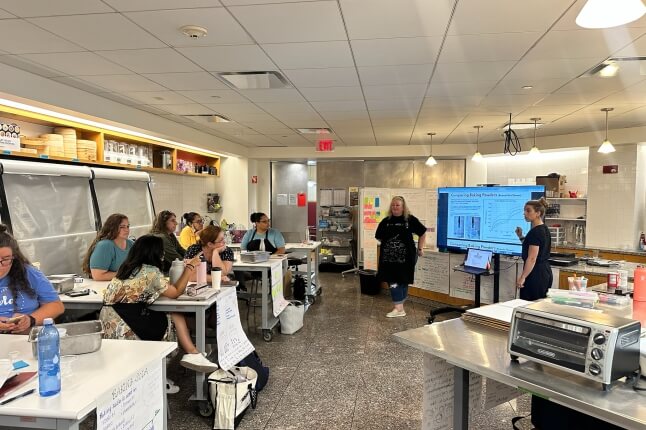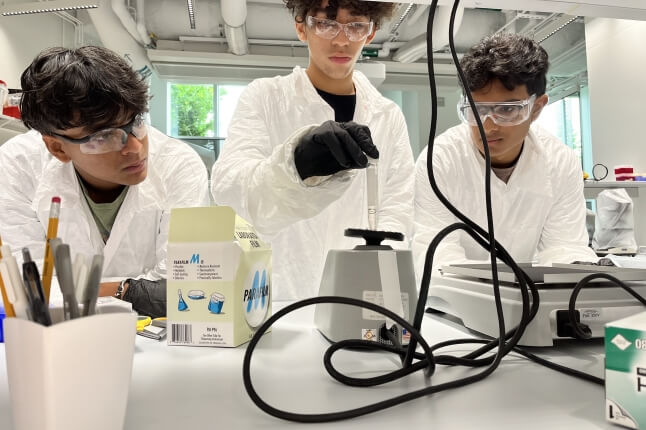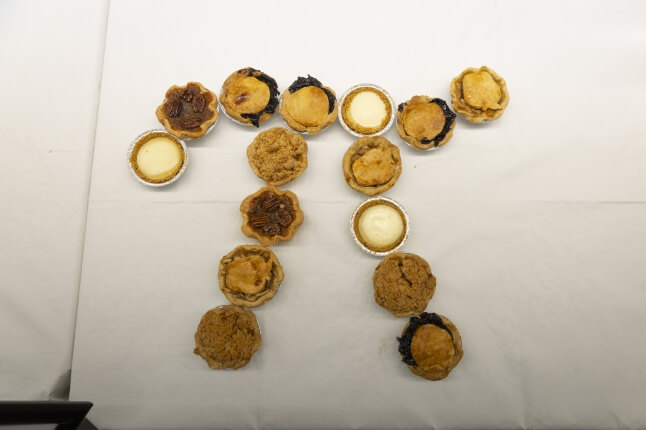News
Alessandro Bolus, a rising sophomore at Hopi High School on northern Arizona’s Hopi Indian Reservation, learns to use 3D printer software. (Photo by Adam Zewe/SEAS Communications.)
Alessandro Bolus leaned close to the screen in front of him, focusing on the colorful 3D object taking shape. Despite outward appearances, this teen, a rising sophomore at Hopi High School on northern Arizona’s Hopi Indian Reservation, was not playing the latest online video game; instead, he was learning to use 3D printer software.
Bolus was one of 14 students who participated in the Harvard Medical School Native American High School Summer Program. As part of the intensive program, focusing on the science of substance abuse, the students spent three days at the John A. Paulson School of Engineering Sciences for hands-on lab sessions highlighting culinary applications of soft matter science and an overview of 3D printing technology.
“I’m interested in science and engineering because you can build things and invent things that people have never made before,” Bolus said. “Engineering really lets your creativity run free.”
He and his peers toured the lab of Jennifer A. Lewis, Hansjorg Wyss Professor of Biologically Inspired Engineering, where they learned about hydrogel, polymer, and organic inks researchers create for complex 3D printing projects, such as soft robot components or materials with embedded electronics. They also explored a machine that enables 3D printing with four different materials simultaneously, and learned how 3D printers are being used in tissue engineering.
Students in the Harvard Medical School Native American High School Summer Program lean in for a closer look at one of the most precise 3D printers available during a tour of the Lewis lab. (Photo by Adam Zewe/SEAS Communications.)
Students put their newfound knowledge into practice by learning to use Tinkercad, an open source 3D printing software package, then designing and printing plastic key chains.
As she explained the process to create a 3D model design, Nicole Black, a bioengineering Ph.D. candidate in the Lewis lab, said she hopes the hands-on experience makes science and engineering more approachable for these students.
“I hope they see the bigger picture of 3D printing and all the real-world applications of this technology,” she said. “There are so many fields that can utilize 3D printing and benefit from this technology.”
The 3D printing lesson followed two days of hands-on science and cooking demonstrations. As they mixed, rolled, and pan fried corn tortillas, the students learned the mechanisms that enable monomers, like simple sugars, to bond and form polymers, like proteins and nucleic acids, which are two of the four macromolecules that comprise food.
Quinntana Wettlin, a rising junior at Culbertson High School in Culbertson, Mont., reached over a bowl of flour for a calculator as she carefully weighed tortilla ingredients.
“It was interesting to see how science is involved in food, in something like a tortilla that I eat all the time,” she said. “In a way, everything is connected by science.”
Quinntana Wettlin, a rising junior at Culbertson High School in Culbertson, Mont., works a ball of tortilla dough during a food science lab. (Photo by Adam Zewe/SEAS Communications.)
Enabling these students to do experiments in the food lab and to use a 3D printer showcases the prevalence of science in a hands-on way, said Kathryn Hollar, Director of Educational Program. Because they live in underserved, rural communities, it is especially important for the students to see the exciting opportunities afforded by STEM education and careers, she said.
“Hopefully, these labs will help them understand that what they can do with 3D printing, and science and engineering in general, is limited only by their own imaginations,” Hollar said. “We want to open a window so they can see the possibilities available through STEM and how these lessons can be applied to their everyday lives.”
Topics: K-12
Cutting-edge science delivered direct to your inbox.
Join the Harvard SEAS mailing list.
Press Contact
Adam Zewe | 617-496-5878 | azewe@seas.harvard.edu



